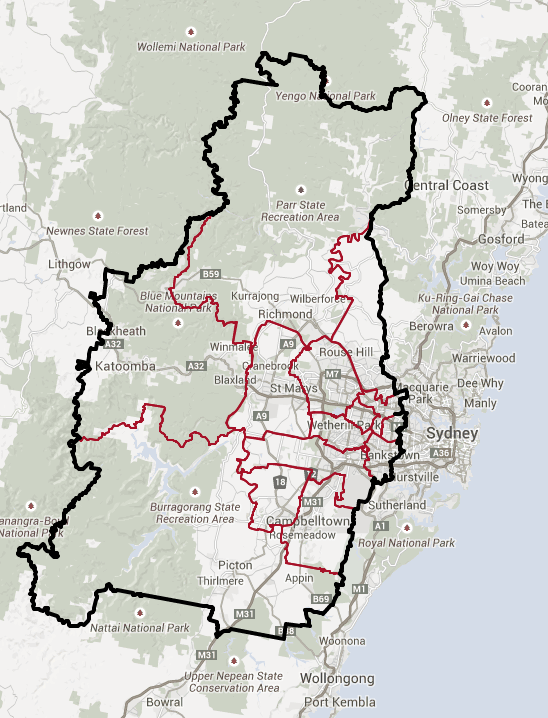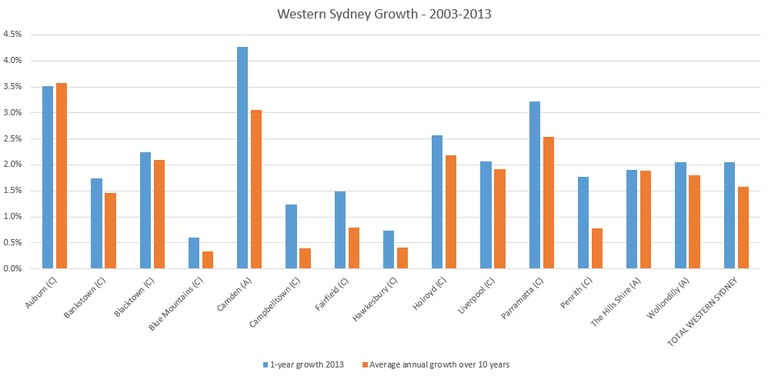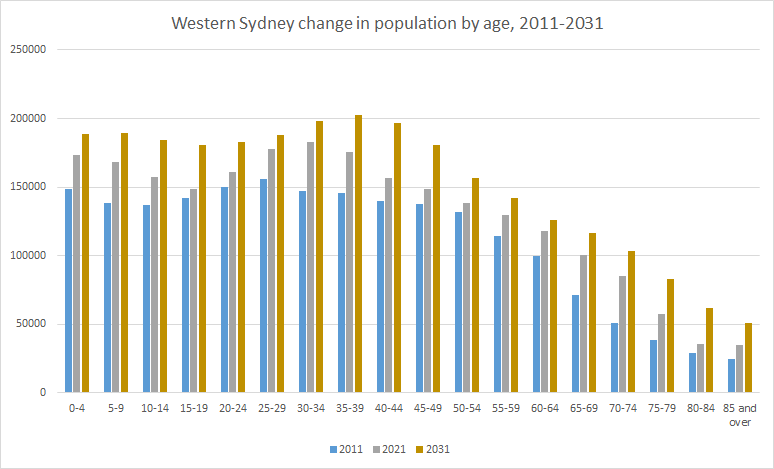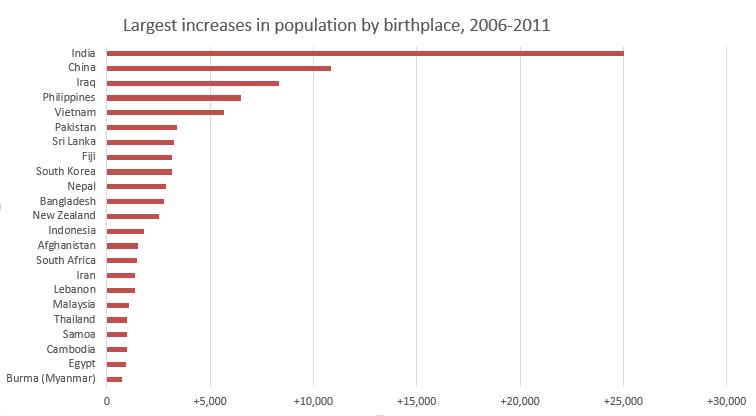.id has recently been commissioned by the newly established “Centre for Western Sydney” at the University of Western Sydney, to produce a profile of the Greater Western Sydney region. Now online, this profile has a wealth of information about this large area and the people who live and work there. .id also works with all 14 councils in Greater Western Sydney, so this is a complementary resource for councils’ own profile, forecast and economy.id sites.
This is a public resource available to all. You can look at Greater Western Sydney overall, any individual Local Government Area, and benchmark to any LGA, Western Sydney, Sydney, New South Wales or Australia. Data in the profile cover 20 years, from 1991 to 2011.
Greater Western Sydney contains about 9% of Australia’s population, and 44% of Sydney’s population. It covers 14 LGAs, from Auburn and Bankstown in the east, to Blue Mountains and Wollondilly in the west.
The region has the major city centre of Parramatta, and all LGAs are growing. In the last few years, growth in places like Camden, Campbelltown and Penrith have really taken off, while growth in Parramatta and Blacktown continues rapidly. The region grew at 2.1% in the last year, and 1.6% p.a. for the past 10 years.

.id has population forecasts for most of the Western Sydney councils, which show a growth rate of 1.8% p.a. over the next 20 years. All age groups will grow, driven by families moving into the large growth areas, particularly in the South-West growth centre around Leppington, spanning Liverpool, Camden and Campbelltown councils. But there is significant ageing expected, particularly in those areas with minimal growth. For instance, Blue Mountains, constrained by national park and losing young people from the area, is expected to have almost no growth at all, and will be dealing with a significantly more elderly population by 2031.

Western Sydney is one of the most diverse areas of Australia, with 38% of the population speaking a language other than English at home, and up to 90% in some suburbs.
Some of the largest population groups of Non-English speakers are found in Western Sydney, for instance:
- 62% of Australia’s Assyrian/Aramaic speakers
- 50% of Australia’s Akan speakers
- 48% of Australia’s Lao speakers
- 45% of Australia’s Arabic speakers
- 43% of Australia’s Kurdish speakers
- 37% of Australia’s Tongan speakers
- 34% of Australia’s Samoan speakers
- 33% of Australia’s Hindi speakers
- 29% of Australia’s Vietnamese
- 28% of Australia’s Filipino/Tagalog speakers
- 28% of Australia’s Tamil speakers
- 27% of Australia’s Maltese speakers
The suburb of Cabramatta has 87.7% Non-English speaking population, the highest anywhere in Australia (excluding remote indigenous communities where Aboriginal languages are dominant). Other Western Sydney suburbs, Bankstown and Canley Vale, are also over 80%.
While many of these communities are largely Australian-born (including Arabic speakers, with about 50% born here), Western Sydney also remains the epicentre of Australian migration. It is a first port of call for many migrants, and all LGAs had increases in the overseas-born populations between 2006 and 2011. Here are the main emerging birthplace groups.

It’s not just about overseas migration – as a first port of call for migrants, Western Sydney also loses a lot of population to migration within Australia – lots of that to coastal NSW and Queensland. The latest data shows a slowing of migration to Queensland from NSW, so it will be interesting to see if this also boosts Western Sydney’s population, as more people stay put.
Western Sydney is also a diverse area socio-economically. While overall a lower income area for Sydney, it has some extremely high income suburbs. In particular, the suburb of The Ponds, in the City of Blacktown, is the most highly advantaged suburb in NSW on the SEIFA index of advantage-disadvantage, ahead of suburbs on the North Shore, such as St Ives and Avalon.
The Centre for Western Sydney is launching this new profile on February 17th, at 2:00pm, as part of a workshop focusing on the new Sydney Metropolitan Plan. This event is being held at the Female Orphan School, UWS Parramatta, and .id will be speaking there. For more information, please contact Scott Brewer of UWS.
For the first time, profile.id for the Centre for Western Sydney puts all the Western Sydney data at your fingertips in the one place. If you are from a Western Sydney council and would like more information about the information tools .id has for your area specifically, please feel free to contact us at us info@id.com.au.













